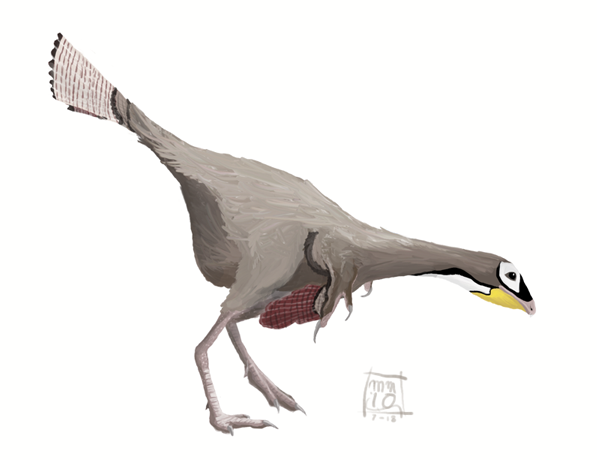Modern-day birds like the northern mockingbird and the greater roadrunner use their feathers to forage for food. When the birds flash their wings, it scares their prey into revealing their hiding spots, and once they move, the bird snatches up the snack.
A team of researchers suspect that smaller dinosaurs similarly used their feathers to hunt for prey in a new study published in Scientific Reports.
For decades, scientists have speculated what the feathers found on the forearms (proto-wings) of some dinosaurs were used for since they were too small for flight. The wings were likely used to scare prey before they evolved for flight. With a flash of their feathers, small predatory dinosaurs would scare prey enough to flee and swoop in for the kill.
[embedded content]
Did Dinosaurs Have Feathers?
Dinosaur fossils with feather-like structures were first identified in the 1990s. The specimen called Caudipteryx zoui was first described in 1998 and was one of the first known dinosaurs to sport feathers. Caudipteryx, about the size of a turkey, had feathers on its forearms and a fan-like tail.
Caudipteryx zoui (Credit: Mark Florence, Smithsonian Institution, NMNH, Paleobiology. Specimen from Department of Paleobiology, NMNH, Smithsonian Institution.
In 2011, researchers speculated that all dinosaurs had some feathers on their bodies. More studies revealed that feathered dinosaurs date 180 million years ago, while the first date back 245 million years ago.
However, evidence of tuft-like feathers was also found on pterosaur fossils in 2019. Because feathers are seen in pterosaurs and dinosaurs, researchers suspect a common ancestor predating them roamed the Earth.
Read More: Did All Dinosaurs Have Feathers?
How Did Dinosaurs Use Their Feathers?
To understand how small dinosaurs may have used their feathers, researchers built a robot called Robopteryx. The team then used it to simulate how dinosaurs would have stalked and scared prey. The robot, modeled after Caudipteryx, can spread its front wings and raise a feathered tail, and researchers chose grasshoppers for prey.
(Credit: Jinseok Park, Piotr Jablonski et al.)
The team recorded how the grasshoppers reacted to the robot’s ‘flush-pursuit’ behavior. The grasshoppers escaped or fled more when the robot’s wings had white patches and when the robot had feathers on the tail.
Grasshoppers fled for their lives 93 percent of the time when Robopteryx flashed its wings. The insects fled only 47 percent of the time when the robot didn’t flash its wings.
Based on these results, the team suggests that while the tiny wings and tail feathers were not used for flight, they might have served a purpose in finding a quick meal.
Read More: How Do Scientists Reconstruct What Dinosaurs Looked Like?
Article Sources
Our writers at Discovermagazine.com use peer-reviewed studies and high quality sources for our articles, and our editors review for accuracy, and trustworthiness. Review the sources used below for this article:
Read More: A Complete Dinosaur Timeline to Extinction: How Long Did They Roam Earth?
Source : Discovermagazine






